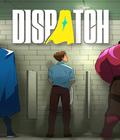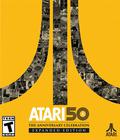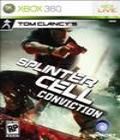Sam Fisher always had to hide. It was both his most alluring and frustrating element to me as a game player. Here was a man who was the closest thing the U.S. government had to an actual ninja, without branching into the realm of spectacular fantasy. He had superior training and skill that made him nearly ageless, along with a stable of nifty spy gadgets. He was almost the NSA's version of Batman.
The thing is that his job was staying invisible and glued to the shadows. Detection, conflict and being seen were practically sins in his universe. He could stop wars and wipe out terrorists without so much as a whisper. He was the stealthiest of the stealth heroes, content to operate in darkness and letting others eventually flex their full power in the open.
But that bothered me a little — he never gave us an inkling of what would happen had he decided to say "Screw it, I'm Sam Fisher" and carve a path littered with the asses of his enemies en route to his objective. Solid Snake eventually fights Metal Gear. Jack Bauer inevitably loads up and cleans house. Jason Bourne kills a man with a hand towel and book as his weapons. Even Batman swoops into the middle of a pit of thugs and tenderizes everyone once in a while. Sam Fisher was the quiet one, the national security bogeyman who rarely went bump in the night.
Splinter Cell: Conviction changes all that in wonderfully aggressive fashion. You can argue there are better games in the series (Double Agent was a personal favorite), but no game featuring Sam Fisher has ever been this satisfying. Ubisoft turns Fisher into the embodiment of controlled fury, artfully treating his skills as a means to his enemies' fatal end. In past games, he hid to survive. Here, he hides to kill. The game makes no bones about its intentions as a revenge tale, yet it thankfully refuses to bludgeon us over the head with Fisher's anger.
The story picks up after the events of Double Agent, which saw Fisher go to pieces after learning about the death of his daughter Sarah in a car accident. Broken and beaten, he takes on a mission asking him to become a prisoner and gain the trust of a small, powerful terrorist group. This ends up causing him to make some harrowing moral choices, one of which leads to the execution of his most trusted confidante, Irving Lambert — the voice on the other end of the radio for so many of his earlier missions. With the terrorist group's eventual defeat, Fisher takes himself "off the grid" and away from Third Echelon, the NSA super-group that employed him.
What causes him to resurface is word that his daughter's death wasn't an accident. Using his skills, he eventually catches the trail of the people who may have killed her. This trail eventually leads to something much greater, including a conspiracy that stretches all the way to the president. Fisher's journey starts at a mansion in Malta, blazes through downtown D.C., and eventually concludes at the White House.
Most of the game's narrative comes from the character Victor Coste, who is being debriefed in a mercenary-run facility. Speaking in the past tense, he sets the tone for each mission, conveniently outlining everything from Fisher's plan of attack to his frame of mind.
But what ends up making the most impact is Ubisoft Montreal's keen use of visual storytelling. It gives the game an identity different from past efforts, and it ends up reflecting more of Fisher's separation from his past life as an NSA operative as well as his basic instincts as a vengeful, grieving father who just happens to have elite combat training.
One example is how the mission objectives are delivered. Instead of a long-winded breakdown or an invasive list that requires you to check the pause screen once in a while, the game uses flat surfaces within the environment as projection screens. Most of the time, you'll see short, efficient messages such as "Get inside the mansion" or "Get to Tom Reed's office" materialize on the sides of buildings or on the walls. Other times, you'll see short bits of footage, such as Sarah's car accident and a shot of the tombstone, or someone being interrogated. And other times, you'll get words that reflect Sam's thoughts or emotions. For instance, in one glorious entrance shot, Fisher ends up having to return to Third Echelon. During his long walk to the front desk, with the sound of his footsteps echoing throughout the massive, foreboding lobby, the words "Welcome Home" splash onto the wall above the receptionist. It's a moment of chilling, solemn subtlety. There are also functional purposes to the words as well, as their location can help point the player in the right direction.
Another intriguing visual wrinkle comes with interrogations. In past games, Fisher would grab someone from behind, hold him at gunpoint and ask questions until he gave up information. In Conviction, interrogations are treated as main events, with the lights and color dimming around Fisher and his target once he grabs onto them. Fisher then proceeds to use force and beat the answers out of his target, using items in the background for extra effect. For example, his first interrogation takes place in a bar bathroom, and he ends up smashing a guy's head into a mirror, busting it through the wooden door of an occupied stall and through a sink. For others, he gets more vicious; slamming a businessman's head into a TV or staking a mercenary's hand to a tree stump are just a couple of the highlights.
While the game has made an effort to make several visionary changes, it's the gameplay that drives home the point that Fisher isn't really interested in hiding anymore.
The most telling change is the mark-and-execute feature, which enables Fisher to essentially pull a Rainbow Six-style open-and-clear move on a room by himself. You can "mark" your targets using the right shoulder button and then press Y to watch Fisher pick them off one by one. The number of people you can mark for death depends on the weapon, and there's one scene during the game where you can tag up to six targets. The execution part of the feature happens in slow motion, with Fisher nailing his victims with Terminator-like precision. It's the easiest path to some truly outstanding action moments, but the game requires you to take out someone with a hand-to-hand-kill to earn the right to do it. Otherwise, the whole game would be about tagging and shooting.
The issue I have with this feature is that it focuses a little too much on range and skips a beat on realism. There are times when Fisher has magic bullets that pass through solid objects to reach the enemy. When this happens, it's usually through whatever cover Fisher is hiding behind.
Conviction's cover system is a very strong point of the game. In a page out of the Rainbow Six playbook, you can pull the left trigger to hide behind cover and use a combination of the thumbsticks and right trigger to trade fire with the enemy. But Fisher also has to the ability to transfer easily from one cover point to the next by simply pointing the crosshairs at some nearby cover and pressing the A button. I had no trouble picking this up, and it added a faster pace to the gunfights as well as the art of eluding and stalking the enemy. Instead of having to scramble and run, some effective cover-to-cover work can help turn the tide against enemies that know where you are — something Fisher didn't really have in the past.
Another element that works to Fisher's advantage is the "last known position" feature, where he leaves a phantom-like outline of himself in one spot if he's detected by the enemy. This outline stays in place when he moves and indicates where the enemy believes he still is. It functions as a decoy of sorts, and it adds a nice bit of tactical thinking to whatever conflicts arise. Sometimes, it leads to moments when Fisher can be in total control of a room, watching thugs and mercs freak out while trying to figure out where he is.
Staying in the shadows is still very much a part of Fisher's game, as the screen turns black-and-white whenever he becomes completely hidden. This, as well as the mark-and-execute trick, is explained in a slightly touching flashback scene where Fisher talks to a very young Sarah about learning not to fear the dark. The only things that have color in these instances are bad guys and objects that can be shot, like fuel barrels or chandeliers that can crash down on unsuspecting foes. He has also retains his climbing skills, being able to scale walls and work his way up pipes. This offers different angles and options during combat, making Fisher even deadlier as he exhibits an ability to transform every room he enters into a deadly game of cat and mouse.
Unfortunately, all this spy-aggressive goodness doesn't last any more than six or seven hours, five if you're a pretty seasoned player. It's an outstanding cluster of hours, but I can't help but feel more could have been done with character development or possibly an extra mission or two to flesh out the story through Fisher's eyes. There's also a flashback mission in Iraq that felt a little out of place, especially since there's no hiding, stalking or interrogating. It was just shooting and covering, so it almost didn't feel like I was playing a Splinter Cell game.
The abruptness of the single-player campaign is offset by the game's multiplayer elements. The online co-op mission extends the story in a way, serving as a prologue to Fisher's mission through the eyes of two highly trained agents searching for WMDs. There's also some fun to be had with Deniable Ops, where you can team up with others against the AI for a variety of tasks. After being bombarded with first-person shooters, I found the Splinter Cell brand of teamwork to be a welcome change. You still have many of Fisher's moves, and there's a slick feel to this third-person style of spyplay that I found to be pretty engaging.
However, the Splinter Cell series will always be about Sam Fisher to me. Conviction turns him into the simmering badass many of us figured he was, even though he doesn't get to be it for very long. It gives some of us a chance to release a lot of the pent-up energy from having to chill in the shadows for years, and any time you get to let the beast out and stop hiding, it feels good.
Score: 8.8/10
More articles about Splinter Cell: Conviction











 Sam Fisher teams up with Third Echelon to help Anna Grimsdottir, Sam's former intelligence gathering operative, who is in trouble. When Sam Fischer is being fed bogus intel and supplied with wrong equipment, he turns on his former employer, realizing the threat comes from within Third Echelon.
Sam Fisher teams up with Third Echelon to help Anna Grimsdottir, Sam's former intelligence gathering operative, who is in trouble. When Sam Fischer is being fed bogus intel and supplied with wrong equipment, he turns on his former employer, realizing the threat comes from within Third Echelon.





































